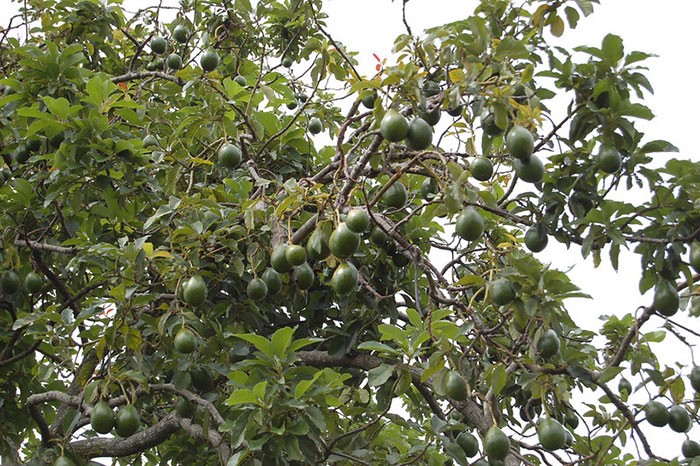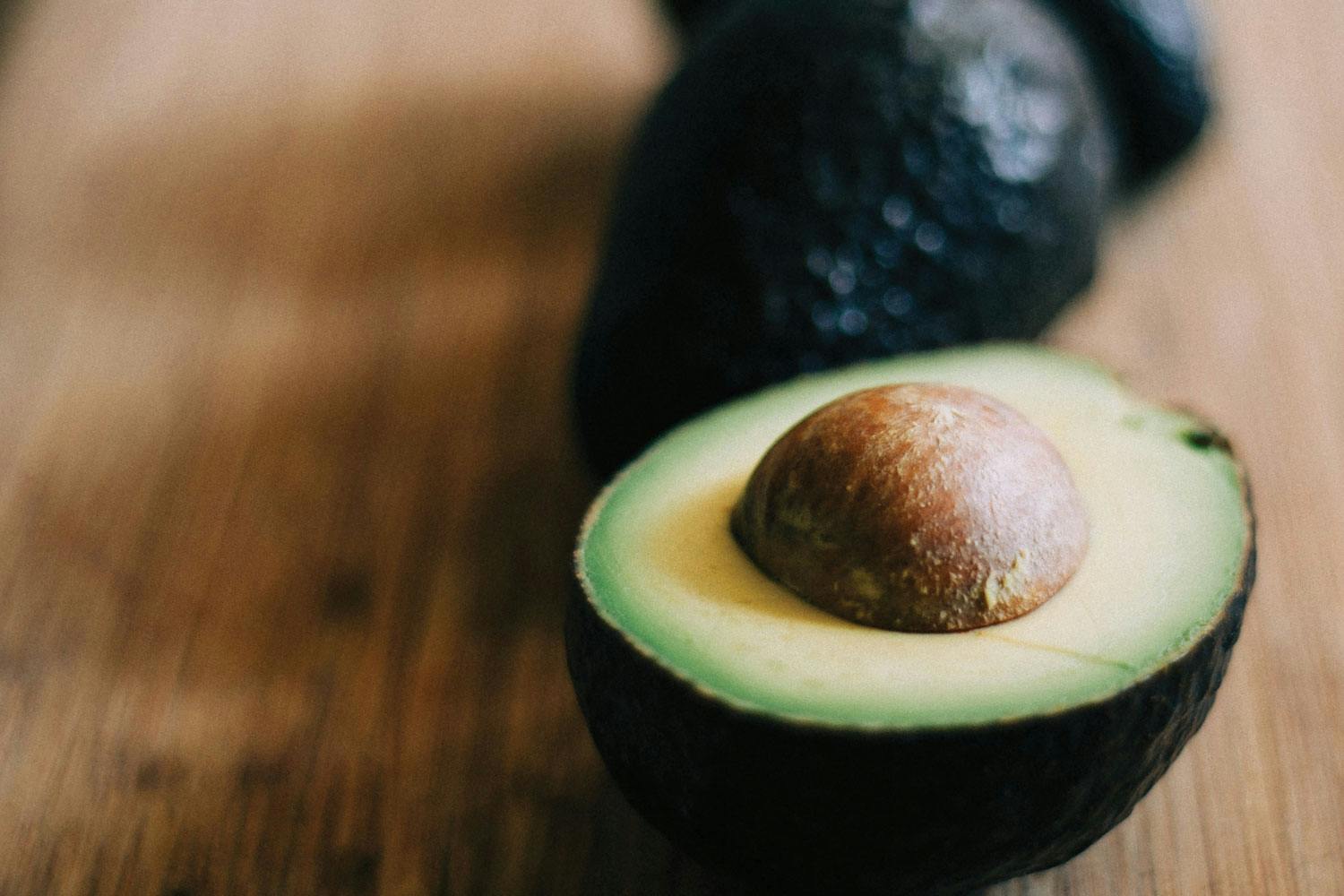Who’s Really Paying for Your Avocado?
Served with deforestation, toxic chemicals, and water waste, the story of avocado could leave a bad taste in your mouth.
If you’ve ever planned a Mexican-themed dinner only to find your avocados aren’t quite ripe, you know there’s no substitute for this rich, creamy fruit. A long list of dishes just aren’t the same without it — from poké bowl, to burger, to wrap.
So how did a semi-tropical fruit achieve the status of international staple? Fuelled by free trade and food trends, worldwide demand has grown at an average annual rate of 14% since 1990. In Canada, we now consume over 10 times as many avocados as we did in the early ’90s. In mere decades, annual avocado production has increased to almost 6 billion kgs worldwide, a whopping seven times the weight of the Golden Gate Bridge.
And they’re not only everywhere, they’re cheap. When you can pick up a mesh bag for a dollar or less per avocado, it’s easy to imagine their footprint is as small as their price. Unfortunately, it’s not.
Archaeologists believe ancestors of the Maya and Olmec first ate avocados in Central America between 8000 and 7000 BCE. They’ve been domesticated for so long, it’s hard for scientists to know what the originals looked like, but they likely weren’t the uniform, small-pitted Hass variety we know and love.
Thanks to the mountainous microclimates of Michoacán, avocados can be harvested year-round, although peak production is August through April.
Today, evergreen avocado trees grow in subtropical regions from Africa to Australia. They come in many shapes and sizes, but most grow between 5 and 20 metres high. If planted from seed, a Hass tree will take up to 13 years to fruit, but can keep producing for centuries. The average tree puts out around 1 million yellow-green flowers, and of those, a few hundred will set fruit after pollination by insects. Thanks to the ample sunlight, rainwater and mountainous microclimates of Michoacán — Mexico’s top avocado-producing region — they can be harvested year-round, although peak production is August through April.
Since Mexico is the world’s leading avocado exporter, let’s consider the environmental effects there. Avocado “demand has important environmental impacts in Mexico,” says Dr. Humberto González — who studies the socio-environmental impacts of Mexican export agriculture. For a start, avocados require a lot of land, since the ever-popular Hass variety should be spaced around 13 m apart. A kilo of avocados requires up to four times as much land as the same weight of bananas, according to a 2014 life-cycle comparison by sustainability students in Germany.

In some areas of Mexico, the value of avocado-producing land has quadrupled over the last decade, encouraging farmers to replace forests with orchards. Michoacán loses 6,000–8,000 hectares of forest to avocado production each year — at least the size of Manhattan. This sudden loss of natural forest can trigger drought and erosion, and drive carbon emissions. Local officials believe avocado-related deforestation was a factor in 2019 floods that killed five people in the state of Jalisco.
Avocados are also especially thirsty, though the amount of water they need depends on the location. Growing a metric tonne of watermelon typically takes about 235 cubic metres of water. Bananas take just shy of 800 cubic metres per tonne. Avocados? Nearly 2,000 cubic metres of water per tonne of fruit (other crops in that same range include plums and mangos). In many places, that water must be added through irrigation, and one calculation has found that the average avocado needs around 70 litres of added water, more if the environment is dry. Think of the impact this has on water-stressed avocado-producing countries like Chile and Mexico.
Local officials believe avocado-related deforestation was a factor in floods that killed five people in the state of Jalisco.
Avocados generally travel by road or sea rather than air, so their transport emissions aren’t as high as they could be. But they’re still carbon-intensive to produce, since high demand drives the use of fossil fuel-heavy machinery and fertilizers. The above-mentioned 2014 analysis shows that — from farm to packaging — every kilo of avocado emits one and a half times as much CO2 as the same quantity of that other smoothie staple, bananas.
On top of all this, our desire for avocado toast at any cost encourages monoculture, which enables producers to specialize labour and farming practices for maximum yields. Though efficient, technologies like chemical pesticides come at a steep price, harming pollinators, contaminating subsoils, and leaching into waterways.
How does all this impact people in avocado country? Today, González says, descendants of the original consumers, producers, and lovers of avocado can no longer enjoy them. Avocados may be relatively cheap in North America, but global demand is so strong Mexican producers can’t keep up, triggering high prices locals can’t afford. These prices have encouraged some taquerías in Mexico City to do the unthinkable: substitute squash for avocado to make “fake guacamole.”
Although farmers in avocado-producing states do earn relatively more than many other Mexican farmers, it’s still not a fair wage or salary, says González. And they have to shoulder environmental costs. His recent research found cancer-linked pesticides in the bodies of virtually every child under 15 tested in two avocado-producing regions. Ironically, the superfood celebrated for its cancer-fighting properties may cause cancer among its producers. Lucrative farming operations also attract drug cartels, who Mexican officials say extort farmers and truckers for cash — in some cases violently — prompting international headlines about “blood avocados.”
Ironically, the superfood celebrated for its cancer-fighting properties may cause cancer among its producers.
Sociologist Angela Serrano of the University of Wisconsin-Madison researches the effects of skyrocketing “green gold” exports in Colombia, fast becoming a top exporter. Rather than providing opportunities for existing farmers to cash in, avocado-farming practices marginalize them, she says. Sustainable, small-scale farms just can’t compete against large-scale monocrop operations, with their expensive irrigation systems and fertilizers.
So where do we go from here? Right now, people and ecosystems in Mexico, Colombia, and other producing regions pay a high price for the avocados we consume, as a handful of major exporting corporations profit. But in the context of globalization, producers will do whatever it takes to fill supermarket shelves in service of demand.
Which brings us to the consumer. A boycott would be disastrous, experts warn, considering how entire regions of people now depend on this crop. González recommends buying organic, since it’s more friendly to local environments and people, and only about 10% of avocados are currently grown that way. But, he points out, organic methods on an industrial scale won’t eliminate deforestation, soil degradation, greenhouse gas emissions or high water consumption.
Neither does organic certification guarantee the rights of farm workers. Fair Trade labels like Fair Trade USA and Equitable Food Initiative hold promise, Serrano and González agree, pointing to coffee as a success story. But Serrano cautions that these labels require investments that are challenging for small-scale farmers to afford.
Organic methods on an industrial scale won’t eliminate deforestation, soil degradation, greenhouse gas emissions, or high water consumption.
Activism by consumer organizations, like Mexico’s Vía Orgánica, can spur change. Gonzáles points to the example of tuna, where global attention on dolphin casualties led to “dolphin safe” labelling in the 1990s, transforming the tuna fishery. “The big organizations of growers of avocados, they are very sensitive when they perceive changes in the habits of the consumers and change in the actions of consumers organizations,” says Gonzáles.
Serrano also has a simple suggestion: Buy ugly fruit. “Support shops where avocados or other fruits are of different shapes,” she says. Demand for perfectly round and plump avocados favours long-term contracts between producers and supermarkets. Buying small, mis-shaped, and speckled avocados helps open up markets to farmers who are not industrialized, she says.
Also, Serrano says, be wary of food trends. The craze for low-carb, high-fat diets like keto and paleo — as well as trendy menu items like avocado toast — can fuel unsustainable spikes in demand. “Consumption booms tend to create a lot of disruptions in places of production,” she says.
Finally, we can diversify our shopping lists. By stocking our pantries with a variety of local, imported, and even ugly foods, we encourage groceries to stock — and farmers to grow — diverse crops that can be grown sustainably. Squash guacamole, anyone?
Print Issue: Summer/Fall 2020
Print Title: The Story of Avocado
